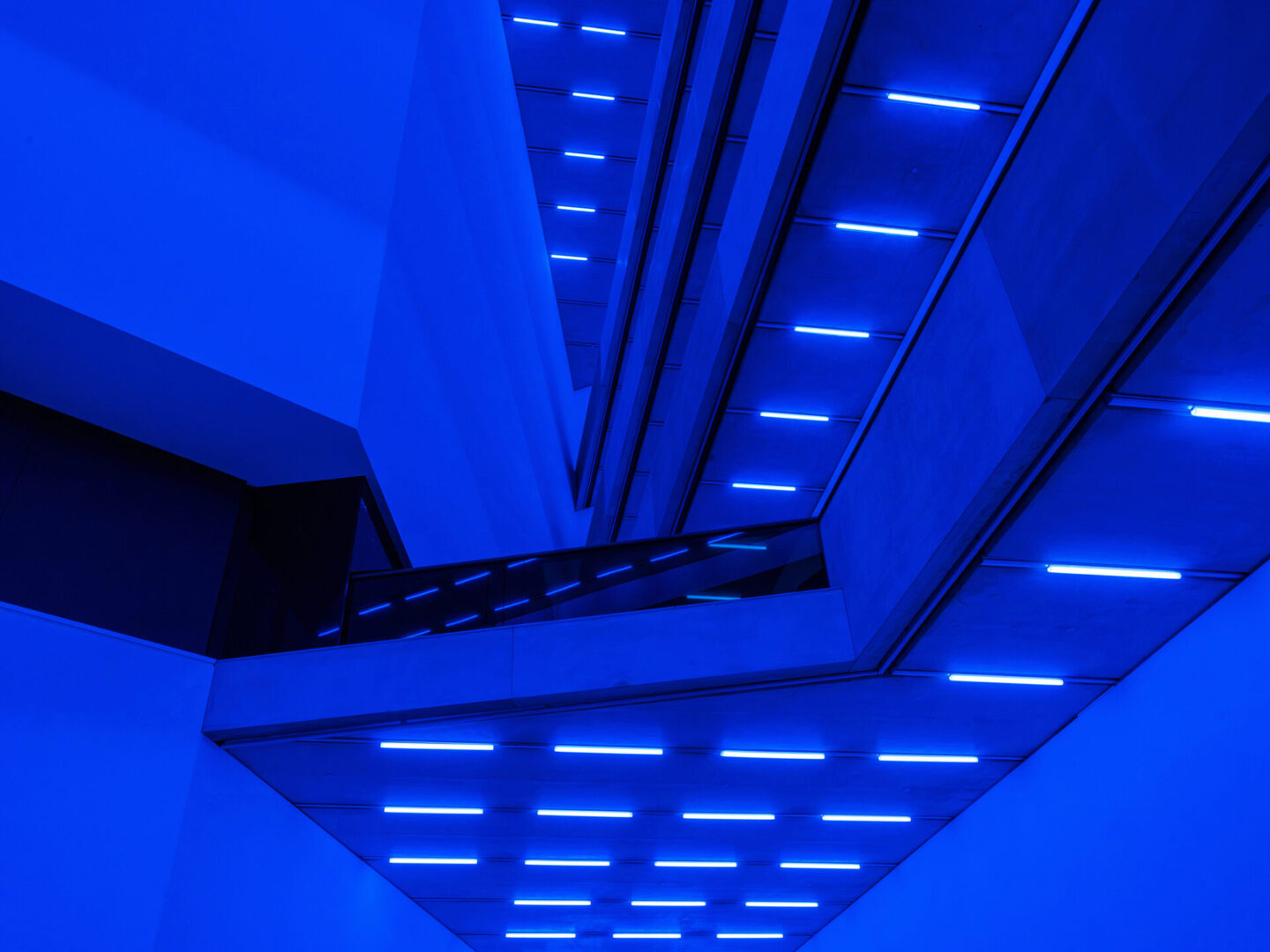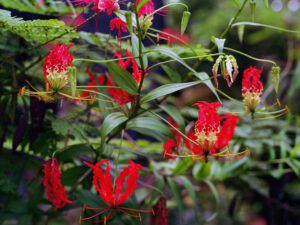Bass is Steve McQueen’s (b. 1969) most abstract work to date. Over the past two decades, the British artist has become synonymous with powerful cinema – think Hunger (2008), Shame (2011) and the Academy Award-winning 12 Years a Slave (2013). He is also a trailblazer in video art, having won the Turner Prize in 1999 and represented Great Britain at the Venice Biennale in 2009. One of his best-known early works is Bear (1993), in which two naked men face off like sparring partners; it is a silent study of conflict, desire, masculinity and race. His most recent film, Grenfell, is a powerful and unflinching response to the 14 June 2017 fire in which 72 people – to whom the piece is dedicated – tragically lost their lives. The installation is currently touring, with next stops at MAC, Belfast; The Box, Plymouth; and Tate Liverpool.

In 2022, McQueen was invited to work on a new project that would premiere at Dia Beacon, New York, and subsequently at Schaulager, Basel. Given his long-standing relationship with the moving image, McQueen’s decision not to create a film was an unexpected departure. Instead, he took a different direction, designing a piece composed exclusively of light and sound. It serves as a tribute to the importance of music as a means of recounting stories, filled with stirring basslines that convey a multitude of narratives – many of which were inspired by Dia’s cavernous, columned space. For McQueen, the building’s dark lower-level hall, filled with rows of columns, evoked the hold of the ships that forcibly carried millions of people from the African continent to the New World in the wake of the transatlantic slave trade. Elsewhere, Dia’s illuminated basement recalled the cellar – the “hole […] full of light” – to which the unnamed protagonist retreats at the end of Ralph Ellison’s celebrated novel Invisible Man (1952).


The audio is the result of collaboration between an intergenerational group of musicians from the Black diaspora. McQueen worked with renowned bassist Marcus Miller on the piece, who brought in several other acclaimed musicians: Meshell Ndegeocello and Aston Barrett Jr., both on electric bass; Mamadou Kouyaté, playing ngoni, a traditional West African string instrument; and Laura-Simone Martin, on upright acoustic bass. In the context of Black history, bass instruments have long been central to the development of distinctive musical genres and cultural traditions – articulating emotions otherwise inexpressible with words. Bass does just this. “There is a commonality in the bass, the vibration, the reverb, the tone,” McQueen notes. “It seems like a calling, an interplay, a form of communication between scattered people. For me it was a way of bringing a diaspora back together.” Bass premiered in 2024 to critical acclaim. Adrian Searle of The Guardian called McQueen “one of the best artists we have, whatever medium he chooses.”

Now, the piece has been adapted for the architecture of Schaulager, Basel. It differs fundamentally from how the work was shown at its original venue in upstate New York, extending across the entire interior, including the full height of the atrium and the breadth of the exhibition space. The references to the Middle Passage and the Black Atlantic still resonate, albeit less pronounced. The work comprises colour and deep bass frequencies, which ricochet off the walls and around the room. Light floods the gallery, cycling – almost imperceptibly – through the visible spectrum, from deep red to ultraviolet. This is controlled by over 1,000 LED tubes, whilst a column of suspended subwoofers handles audio. The experience might be reminiscent of a nightclub – if not for the fact that every moment seems to unfold in slow motion.

McQueen says: “What I love about light and sound is that they are both created through movement and fluidity. They can be moulded into any shape, like vapor or a scent; they can sneak into any nook and cranny. I also love the beginning point where something isn’t a form as much as it is all-encompassing.” Whilst Bass might seem like a shift in approach, away from film and towards immersive installation, it actually strips McQueen’s practice back to its essentials: sensory, immediate, rooted in human perception and stories that have been suppressed or forgotten. Like the rest of his work, its effect on audiences is sure to be profound. “Bass is a space to reflect,” he explains. “It’s not a mirror. It’s a space where things are bouncing off you, and you can expand it into something more, because so many things come into your head, the fact that you bring in history, you bring your past into that space, and you are engaged in that moment.”
Bass is at Schaulager Basel until 16 November 2025 | schaulager.org
Words: Eleanor Sutherland
Image Credits: Steve McQueen, Bass, 2024, LED Light and Sound, Courtesy the artist, Co-commissioned work by Laurenz Foundation, Schaulager Basel and Dia Art Foundation, 15 June – 16 November 2025, Schaulager® Münchenstein/Basel (Installation view), Photo: Pati Grabowicz, © Steve McQueen.





